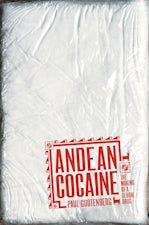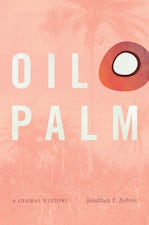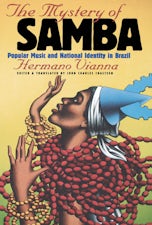Guaraná
How Brazil Embraced the World's Most Caffeine-Rich Plant
By Seth Garfield
336 pp., 6.125 x 9.25, 17 halftones, 2 maps, 1 table
-
Paperback ISBN: 978-1-4696-7127-7
Published: December 2022 -
Hardcover ISBN: 978-1-4696-7126-0
Published: December 2022 -
E-book EPUB ISBN: 978-1-4696-7128-4
Published: November 2022 -
E-book PDF ISBN: 979-8-8908-6350-8
Published: November 2022
Buy this Book
- Paperback $34.95
- Hardcover $99.00
- E-Book $22.99
For Professors:
Free E-Exam Copies
Awards & distinctions
Bolton-Johnson Prize, Conference on Latin American History
Warren Dean Prize, Conference on Latin American History
World Winner and Brazil Winner, 2023 Gourmand World Cookbook Awards, Drinks History
World Winner and Brazil Winner, 2023 Gourmand World Cookbook Awards, Drinks History Non Alcoholic
2023 Robert W. Hamilton Book Awards, Office of the Vice President for Research, Scholarship, and Creative Endeavors and the University Co-operative Society, University of Texas at Austin
Brazil Winner, 2023 Gourmand World Cookbook Awards, Indigenous Peoples Food
Honorable Mention, 2023 Roberto Reis Book Award, Brazilian Studies Association
Honorable Mention, Elinor Melville Prize, Conference on Latin American History
Honorable Mention, 2023 Sergio Buarque de Holanda Prize for Best Book in Social Sciences, Brazil Section of the Latin American Studies Association
Guaraná’s journey elucidates human impacts on Amazonian ecosystems; the circulation of knowledge, goods, and power; and the promise of modernity in Latin America's largest nation. For Garfield, the beverage's history reveals not only the structuring of inequalities in Brazil but also the mythmaking and ordering of social practices that constitute so-called traditional and modern societies.
About the Author
Seth Garfield is professor of history at the University of Texas at Austin. His most recent book is In Search of the Amazon.
For more information about Seth Garfield, visit
the
Author
Page.
Reviews
"Seth Garfield’s book fills a gap in the historiography by providing the first thorough study on the history of guaraná. . . . [This is a] complex, well-connected, superb book, which will be of interest to a variety of scholars from various disciplines including those who are non-Brazilianists.”—The Americas
“A powerful, evocative book, a work of deep scholarship . . . It offers an understanding of how a native plant is connected to so much else.”—Journal of Latin American Geography
"A deeply researched narrative that illuminates so much more than one seems to see at first glance. . . . Garfield situates guaraná within a series of different systems of knowledge and culture over a period that stretches from the earliest moments of colonization of the Amazon to the present. "—H-LatAm
"This is an impressive scholarly achievement and a significant contribution to the historiography. . . . The book is at turns cultural history, agricultural history, environmental history, and history of science; each new analytical lens is elaborated in detail and carefully contextualized."—H-Environment
"A luminous social biography of a single Amazonian fruit. Historian Seth Garfield reinvigorates the abiding relevance of the history of commodities as an entry point into Latin American history. . . . Elegantly written and immensely interdisciplinary."—Not Even Past
"Beginning with an origin myth—the eyes of a child recast as the guaraná fruit—Garfield gives us a rich and engaging history of this Brazilian plant's use over time as an Indigenous product, a colonial stimulant, an Amazonian commodity engaging nationalistic dynamics, and a drink that has now come to rival Coca-Cola as a kind of national beverage. A terrific book."—Susanna Hecht, University of California, Los Angeles




